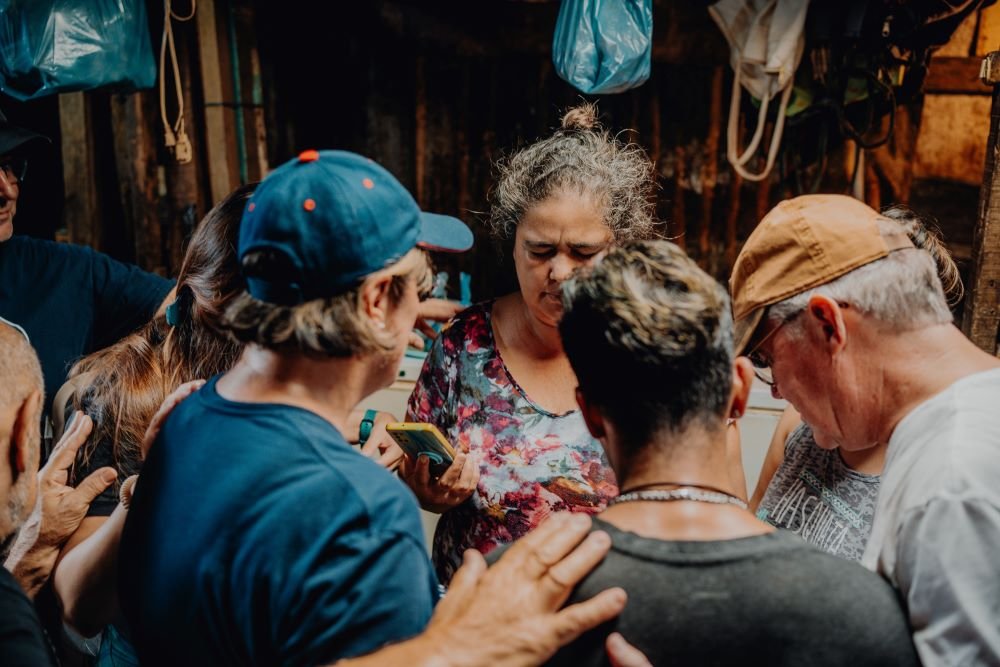How to Lead in Ministering to the Vulnerable
Ken Murphy
When it comes to leadership, the action you take is more important than the awareness you give. Your actions reveal what you value and reinforce what you want to be valued among the people you lead.
You can be aware that the lawn needs mowing, but unless you cut the grass, it will still become overgrown. You can be aware your car’s scheduled maintenance is overdue, but without action, you could damage your car’s engine. That same principle is true when it comes to the ministry Buckner International and churches like you experience with vulnerable children, families, and seniors.
Awareness without action cannot lead to change. And when it comes to following Jesus’ example of serving vulnerable children and families, awareness without action cannot lead to transformation.
In Matthew 25:35-40, Jesus identifies with those who are hungry, thirsty, in need of shelter or clothing, sick or in prison. He compels his followers, “And the King will say, ‘I tell you the truth, when you did it to one of the least of these my brothers and sisters, you were doing it to me!’”
When Jesus invites the disciples to lean in and survey how they live their lives for the good of the “least of these,” he drops a convicting dilemma.
“And he will answer, ‘I tell you the truth, when you refused to help the least of these my brothers and sisters, you were refusing to help me.’” (Matthew 25:45 NLT)
“Awareness without action cannot lead to change.”
The tone in Jesus’ voice has strength but also kindness. In that moment, Jesus becomes the voice for those whose voice goes unheard in deafening silence. Can you imagine being there during that conversation as he looks you and your companions in the eyes, desiring that you never lose the connection between serving the vulnerable and serving him? Awareness without action cannot lead to change.
This dose of truth gives us as church leaders a new perspective from which to lead our congregations. When we have healthy perspective, our core planning will almost always write itself. But, as process thinker and author Tom Paterson said, “Plans do not self-execute.” He was essentially saying the same thing. Take action.
Step 1: Gain Perspective
Lead your team to ask hard questions and write your discoveries down. Where are we now in caring for the least of these? What hard truths are we refusing to address? How is life experienced from a vulnerable child’s perspective? How is life experienced from a vulnerable family or senior’s perspective?
These questions expand your church’s empathy quotient and define a starting point.
Step 2: Start with Why
Organizational guru and author Simon Sinek says people won’t buy into a product, service, movement, or idea until they understand the why behind it.
Gather your core leaders and read Matthew 25:35-40. Imagine your preferred future as a church family as if Jesus were in the room with you. Lead your church to not only minister to vulnerable children and families but emulate the type of people you want to become.
Step 3: Ask Where God is at Work
“Where is God already ministering among vulnerable children and families? How can you mobilize your church to pray, go and give to the least of these?”
Years ago, Henry, Blackaby, Richard Blackaby, and Claud King created the “Experiencing God Day-by-Day” devotion. John 5:17 and 19-20 were passages central to their key challenge to see where God is working and join him.
Where is God already ministering among vulnerable children and families? How can you mobilize your church to pray, go and give to the least of these?
Step 4: Identify the Benefits
Take great thought in gathering your core leaders around the table to articulate the benefits of your actions. Considering the benefits of service is valuable but often overlooked.
What will this mean for those we are serving? What will this mean for our church? What will this mean for the next generation? What will this mean for me personally? What will this mean to the Lord?
Step 5: Design A Plan
Develop action points, set benchmark goals, and schedule intentional celebrations along the way. Celebrate the stories of transformation happening within the children and families you are serving, as well as those who are serving within your congregation.
Write it down on paper. Give every goal a deadline and every member of the team the opportunity to be involved.
Step 6: Pray Continually with Gratitude
1 Thessalonians 5:16-18 says, “Rejoice always, pray continually, give thanks in all circumstances; for this is God’s will for you in Christ Jesus” (NLT).
Bring every plan, every action, every expression of generosity under the leadership of Jesus in ongoing cooperative prayer with Him. Put this on continuous play in your life and in the lives of those you lead and watch God move!
Our mission at Buckner guides us to follow the example of Jesus as we serve vulnerable children, families, and seniors. God is at work across the greater Houston area, the state of Texas, and internationally. It would be our great privilege to walk with you and hear how the Lord is leading your church to respond by moving from awareness to action however would be most helpful.
To learn more, visit our website at buckner.org, or email our Church Engagement team at church@buckner.org.
Ken Murphy serves as Senior Director of Church Engagement for Buckner International and has served churches in New Mexico, Georgia, Mississippi and Texas. With over 25 years of ministry experience, he has served as a church planter, executive pastor, in multisite leadership development and as a personal coach to ministry and business professionals. Follow Ken on LinkedIn at linkedin.com/in/murphyken or contact him at church@buckner.org or 214-758-8015










Equipping African American and multicultural leaders for gospel work